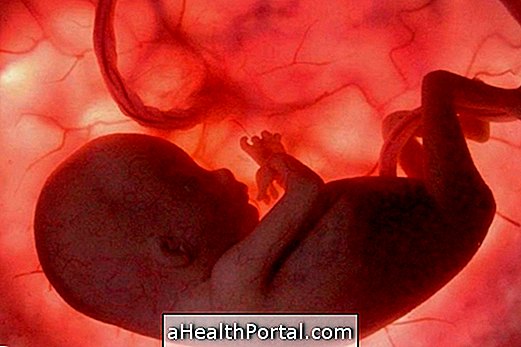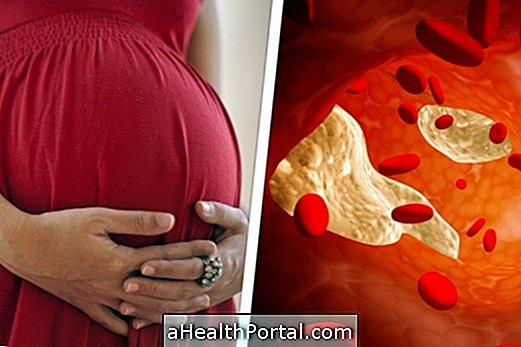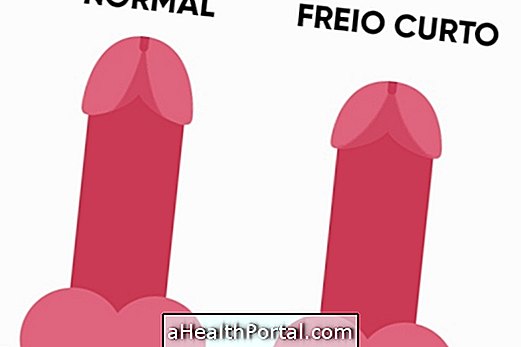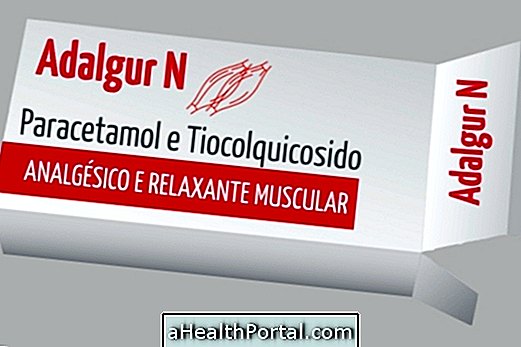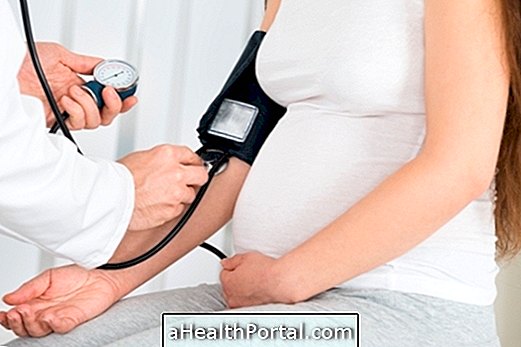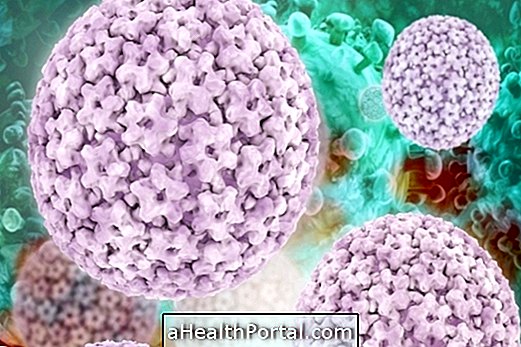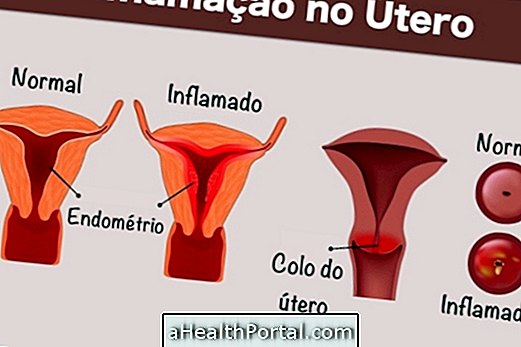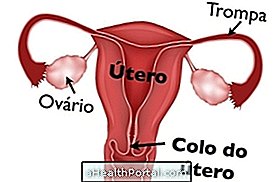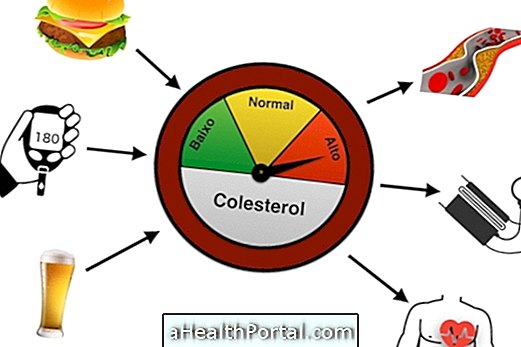At 4 weeks of gestation, which is equivalent to the first month of pregnancy, three layers of cells have already formed, giving rise to an elongated embryo with a size of about 2 millimeters.
At this point you can already do the pregnancy test, because the human chorionic gonadotropin hormone is already detectable in the urine.
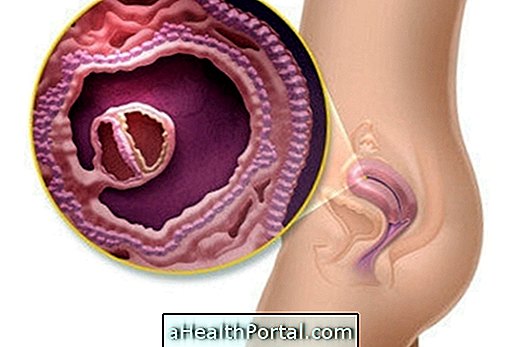
Development of the embryo
At four weeks, three layers of cells have already formed:
- The outer layer, also called ectoderm, that will transform into the brain, nervous system, skin, hair, nails and baby teeth;
- The middle layer or mesoderm, which will convert into the heart, blood vessels, bones, muscles and reproductive organs;
- The inner layer or endoderm, from which will develop the lungs, liver, bladder and digestive system.
At this stage, the cells of the embryo grow in the lengthwise direction, thus acquiring a more elongated shape.
Size of embryo with 4 weeks
The size of the fetus at 4 weeks' gestation is less than 2 millimeters.

Changes in the woman with 4 weeks of pregnancy
Generally, the most common changes in the woman at 4 weeks of pregnancy are tiredness, discouragement, sore breasts, irritability and crying craving, which is normal due to hormonal changes. If pregnancy symptoms are present and menstruation does not come, it is best to take a pregnancy test. Learn to recognize early pregnancy symptoms.
At this stage of gestation, it is very important to have a good diet and to avoid alcoholic beverages and cigarettes, in order to reduce the risk of complications during pregnancy and for the baby to be born healthy.
Confirm which month of pregnancy you are entering your data here:

Your pregnancy by quarter
To make your life easier and you do not waste time looking, we separate all the information you need for each trimester of gestation. What quarter are you in?
- 1st Quarter (1st to 13th week)
- 2nd Quarter (14th to 27th week)
- 3rd Quarter (from the 28th to the 41st week)

